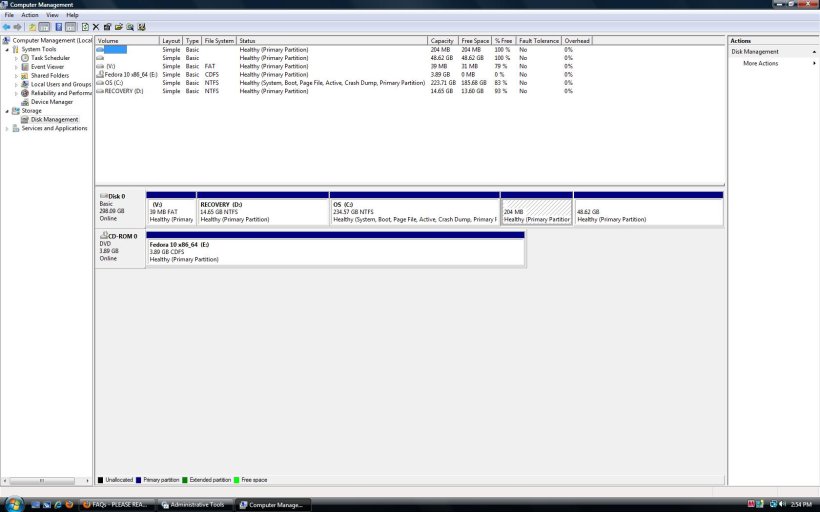boscopecker
Member
All,
I am brand new to Linux and this forum. I have done some searching and read the sticky FAQ thread, but have not been able to put together a solution.
My machine is brand new (64-bit) and I have installed Fedora 10 using the following instructions:
Fedora - NeoSmart Technologies Wiki
I used the Fedora recommended partitioning for the hard drive. I had to shrink the Vista portion in order for that part to work. I followed step 5 and put Grub in the first sector of the boot partition so EasyBCD could get at it later.
I then moved on to the EasyBCD part, first using version 1.7.2. The 50GB partition I made for Linux had a bunch of "??????" after it, which was strange. I followed the instructions (above) and left the "Grub isn't installed to the MBR/bootsector" unchecked. When I tried to boot to NeoSmart Linux it gave me the following error:
"Loading new Partition
Bootsector from C.H. Hochstatter
Cannot load from Harddisk
Insert systemdisk and press any key"
Note: I also tried other drives, and checking the box, but none worked and gave me various errors.
So I did some searches and figured installing EasyBCD 2.0 might help. Now, the 50GB partition with Linux shows up as "Partition 5 (Type0x8E - 49GB)". I used this with the unchecked box and tried to boot Linux. Now it just goes to a black screen and brings me back to the dual boot start up (where you can choose Vista or Linux).
Now I'm stumped. Any suggestions out there?
PS - If this is something that has been beaten like a dead horse on these forums I apologize that I am not savvy enough to recognize the solution.
Thanks,
Steve
Addendum:
And also, the thread linked below pretty much explains my problem I had when I used EasyBCD 1.7.2
Now it doesn't give me the Hochstatter error with 2.0, just doesn't work
What is wrong when I use EasyBCD 1.6 to boot FC7? - LinuxQuestions.org
Thanks in advance for the help.
I am brand new to Linux and this forum. I have done some searching and read the sticky FAQ thread, but have not been able to put together a solution.
My machine is brand new (64-bit) and I have installed Fedora 10 using the following instructions:
Fedora - NeoSmart Technologies Wiki
I used the Fedora recommended partitioning for the hard drive. I had to shrink the Vista portion in order for that part to work. I followed step 5 and put Grub in the first sector of the boot partition so EasyBCD could get at it later.
I then moved on to the EasyBCD part, first using version 1.7.2. The 50GB partition I made for Linux had a bunch of "??????" after it, which was strange. I followed the instructions (above) and left the "Grub isn't installed to the MBR/bootsector" unchecked. When I tried to boot to NeoSmart Linux it gave me the following error:
"Loading new Partition
Bootsector from C.H. Hochstatter
Cannot load from Harddisk
Insert systemdisk and press any key"
Note: I also tried other drives, and checking the box, but none worked and gave me various errors.
So I did some searches and figured installing EasyBCD 2.0 might help. Now, the 50GB partition with Linux shows up as "Partition 5 (Type0x8E - 49GB)". I used this with the unchecked box and tried to boot Linux. Now it just goes to a black screen and brings me back to the dual boot start up (where you can choose Vista or Linux).
Now I'm stumped. Any suggestions out there?
PS - If this is something that has been beaten like a dead horse on these forums I apologize that I am not savvy enough to recognize the solution.
Thanks,
Steve
Addendum:
And also, the thread linked below pretty much explains my problem I had when I used EasyBCD 1.7.2
Now it doesn't give me the Hochstatter error with 2.0, just doesn't work
What is wrong when I use EasyBCD 1.6 to boot FC7? - LinuxQuestions.org
Thanks in advance for the help.
Last edited:



